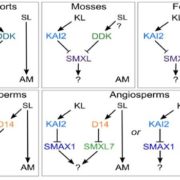
Reassessing the evolution of strigolactone synthesis and signaling
Blog, Plant Science Research Weekly, Research, Research BlogMuch of our understanding of strigolactones (SLs) as developmental hormones and rhizosphere signals comes from studies of angiosperms. Understanding the ancestral role for strigolactones is complicated by the fact that some of the SL-related genes are closely related to those responsive to karrikins…
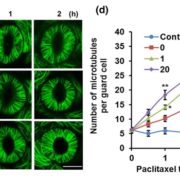
Microtubule involvement in stomatal dynamics
Blog, Plant Science Research Weekly, Research, Research BlogStomatal dynamics have been investigated in terms of ion exchange involvements, turgor pressure fluctuations, and transcriptional changes, particularly in response to environmental stresses. However, the involvement of the cytoskeleton during this process, particularly concerning the role of microtubules…
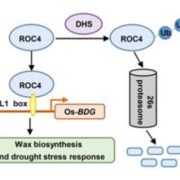
DROUGHT HYPERSENSITIVE negatively regulates cuticular wax biosynthesis by promoting the degradation of transcription factor ROC4 in rice
Blog, Plant Science Research Weekly, Research, Research BlogWax covering the outer surface of the shoot (epicuticular wax) is crucial in the ability of the plant to conserve water. Wang et al. identified a drought hypersensitive plant that overexpresses an E3 ubiquitin ligase which they named DROUGHT HYPERSENSITIVE. In these overexpression plants, there was a…

Extremely flexible infection programs in a fungal plant pathogen
Blog, Plant Science Research Weekly, Research, Research BlogFilamentous plant pathogens have developed an extra-ordinary level of dynamic genome architecture that adapts to changing host environment in the best possible way to promote infection. There are very limited studies describing the impact of this genome plasticity on phenotypic variation. Haueisen et…
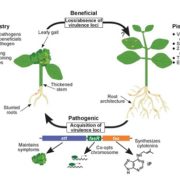
Evolutionary transitions between beneficial and phytopathogenic Rhodococcus
Blog, Plant Science Research Weekly, Research, Research BlogRodococcus bacteria are often identified as causal agents in disease outbreaks. Savory et al. analyzed 60 isolates from diseased plants. By comparing these new isolates and previous isolates, they found that 64 of 66 pathogenic isolates carry a linear virulence plasmid, and that all but four carried…
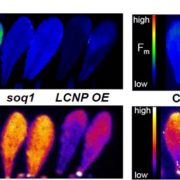
What We're Reading: December 22nd
Blog, Research, Research Blog, WWR Full PostReview: On the selectivity, specificity and signaling potential of long-distance movement of messenger RNA
Regulation of transcription occurs at the cell-type specific level, but transcribed messenger RNA is mobile and can move between tissues through plant vasculature, serving as a long distance…

Funding Opportunity: 2018 Botany in Action Fellowship
Blog, Funding OpportunitiesThe Phipps Conservatory and Botanical Gardens (Pittsburgh, PA) 2018 Botany in Action Fellowship program is currently accepting proposals for this unique fellowship, which fosters the development of the next generation of plant-based scientists who are committed to both excellent research and educational…
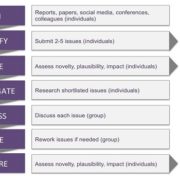
Point of View: A transatlantic perspective on 20 emerging issues in biological engineering studies
Blog, Plant Science Research Weekly, Research, Research Blog“Horizon scanning” describes the process of trying to rationally predict the future. Wintle et al. describe the results from a horizon-scanning exercise to identify emerging issues in biological engineering. The authors used an iterative approach to identify key issues in the near and longer-term…

Plant RuBisCo assembly in E. coli with five chloroplast chaperones ($)
Blog, Plant Science Research Weekly, Research, Research BlogIn plants, Ribulose-1,5-bisphosphate carboxylase/oxygenase (RuBisCo), the enzyme responsible for fixing carbon, is a made up of 8 each of the large and small subunits, making the L8S8 form. Efforts to study this enzyme have been thwarted by the inability to assemble an active L8S8 form in a heterologous…

